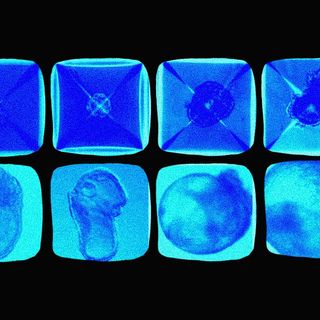Death is the last frontier for all living things — or at least, it was. A new scientific breakthrough throws open the question of what constitutes death: scientists were able to revive functionality in cells and vital organs in pigs that had been dead for more than one hour.
Published on Wednesday in Nature, researchers from Yale University approached a scientific horizon that is the stuff of science fiction: six hours after using a machine called OrganEx to pump a nutrient-filled fluid into the dead pigs, they observed some organs beginning to show signs of life again. The hearts, kidneys, and livers of the pigs, for instance, showed normal cell function. “After [one] h[our] of warm ischemia, OrganEx application preserved tissue integrity, decreased cell death, and restored selected molecular and cellular processes across multiple vital organs,” the researchers observed.
“The Yale team’s secret sauce is a proprietary fluid of electrolytes, vitamins, amino acids, and other nutrients, plus a cocktail of 13 drugs that reduce cell death and cellular stress and modulate the immune and nervous systems,” Wired reported.
It’s important to note that none of the organs regained their full functionality: they showed signs of repair. But the implications are significant: it could mean being able to preserve organs for much longer than we are currently able to, unlocking the vast potential for organ transplantation efforts. “The latest findings raise a slew of questions — not least, whether medical and biological determinations of death will need revising,” Brendan Parent, an assistant professor of bioethics at New York University, who was not involved in the study, noted in a commentary.
Related on The Swaddle:
Scientists Plan to Revive Woolly Mammoths, Raising Bioethical Concerns
Some of the organ-preserving methods currently in use involve cooling them to reduce their demand for oxygen and slowing down cell death, and using a machine called ECMO, or extracorporeal membrane oxygenation system, which acts as a substitute circulatory system and pumps oxygen into the blood while removing carbon dioxide. These are ways to preserve other organs after ‘brain death’ — when the brain no longer shows any electrical activity, which is considered to be the clinical and legal definition of death. It’s after someone is declared brain dead that their organs become viable for transplanting to others. Researchers at Yale, however, challenged this definition in 2019, when they restored some tissue functionality in the brains of pigs that had been decapitated for four hours. They accomplished this using a machine called BrainEx.
Even at the time, the experiment led to ethical debatesaround what to prioritize first: restoring human life, or removing their organs for donation? The latter, once straightforward because of an easy definition of death, no longer is: if brain death can in fact be reversed, what are the ethics of not trying to do so to save individuals with brain death, rather than others who could be saved by their organs?
The current advance takes this development even further: “whereas ECMO only slows cell death, OrganEx greatly improved the cellular architecture in tissues, including in the brain,” Parent noted.
“Were a future iteration of OrganEx ever to be used in humans, there might be few cases where it could restore organs without also restoring some important level of brain and heart function,” Parent adds. But there’s also a risk that resuscitated patients will be unable to get off life-support — a phenomenon that’s already prevalent in ECMO-induced resuscitations, and is called the “bridge to nowhere.” This would lead to even more of an ethical dilemma in terms of how to proceed with the patient’s treatment.
The breakthrough then not only challenges what it would mean to declare someone dead — but also the costs of trying to reverse death itself. Weighing whether the ethical dilemmas are worth advancing with the science may itself be an ethical dilemma — leading to an existential question may narrow down death to the difference between life and being alive.




